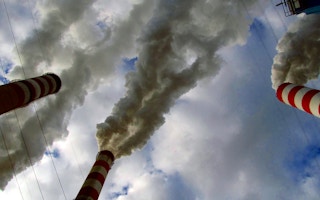At the United Nations climate conference in Paris, courageous and visionary leaders recognized that people rarely change the world when they work within the constraints of what they think is possible. The world hoped for an agreement, but most of us did not dare to dream of a deal that aspires to limit temperatures to 1.5° Celsius above pre-industrial levels. Paris delivered for the planet and for the poor.
Five important steps must come next.
First, we need to approach development differently. Climate change must be considered in all of our work – from building cleaner cities to producing more food on less land – with a much stronger focus on adapting to changing climate patterns. This means that when we build a road in a country like Mozambique, we are also ensuring that it is resilient to the floods that accompany incessant rains. To this end, the World Bank unveiled a new climate action plan in Paris to help Sub-Saharan Africa in the years ahead.
Second, we need a clean-energy transformation at the speed and scale of the digital revolution. The Paris talks sent a clear signal to markets, public officials, and investors that low-carbon growth is the future. Market forces will drive this agenda forward, and there will be greater potential to invest in renewable energy in developing countries than ever before. Dramatic decreases in the cost of low-carbon technologies also support an ambitious global transition toward renewable energy.
One example is Bangladesh’s innovations in increasing the sale of solar-power systems for homes in rural areas. Our low-cost financing helped to attract tremendous interest from the private sector, and today Bangladesh has the fastest-growing solar-home program in the world. More than 18.5 million people in rural areas now have reliable access to solar-powered electricity.
Third, businesses must immediately become climate literate. In Paris, CEOs from various industries – ranging from cement to technology companies – made clear pledges to decrease carbon footprints, invest in renewables, and manage resources sustainably. This transition will require more partnerships across all levels of government, civil society, and the private sector.
“
The conference in Paris produced an agreement that went beyond our expectations. We must now move with ambition that matches this historic deal.
Fourth, world leaders must push harder for carbon pricing. Carbon dioxide emissions from the burning of fossil fuels carry a hefty price. It’s a bill that comes to all of us in the form of public-health costs, damage to the environment, and adverse weather effects. While about 40 countries and 23 cities, states, and regions are using a carbon price, this covers only 12 per cent of annual greenhouse-gas emissions. More than 90 developed and developing countries included carbon-pricing schemes among the actions they intend to take after the Paris deal. This is a welcome step.
Finally, finance will be critical. National climate action plans – submitted by more than 180 countries – identify trillions of dollars of climate-related needs. This global economic transition holds tremendous investment opportunities for the private sector. The risks of carbon are high, but the opportunities to de-carbonize are even greater. For our part, we recently pledged to increase the World Bank Group’s climate financing to as much as $29 billion annually by 2020.
Every country will take a different path to deliver on its commitments. National leaders must honor the timetable for adaptation and emissions reductions. We are here to support them. We have plans that focus on climate-smart agriculture, building greener cities, increasing access to renewable energy, improving energy efficiency, and leveraging our finance for greater private investment. All are designed to lower greenhouse-gas emissions and help people adapt to the world’s changing climate.
The conference in Paris produced an agreement that went beyond our expectations. We must now move with ambition that matches this historic deal – one supported by nearly 200 countries. We are at a remarkable moment in the long battle to reduce harmful emissions, and we must capitalize on this global commitment to preserve our planet for future generations.
Jim Yong Kim is the president of the World Bank Group.
Copyright: Project Syndicate, 2015.
www.project-syndicate.org


















